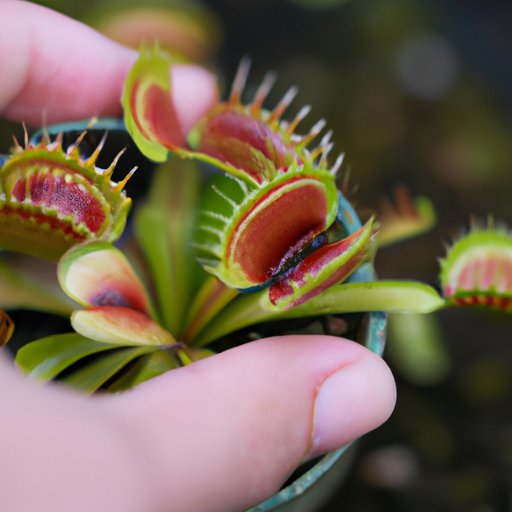
How to Take Care of a Venus Fly Trap
If you’ve ever seen a Venus fly trap or heard of one, you may have been intrigued by this carnivorous plant. Venus fly traps are a unique and fascinating plant to grow, but they require special care and attention to thrive. If you’re new to growing venus fly traps or are looking to improve your plant care skills, this article is for you.
A Step-By-Step Guide for Beginners
Planting a Venus Fly Trap: When it comes to planting your Venus fly trap, use a planting pot that is two to four inches deep and has drainage holes. The soil you use should be sphagnum peat moss and perlite, mixed in equal parts. Your Venus fly trap should be kept moist at all times, so be sure to water regularly.
Watering: Be sure to always use distilled water or rainwater when watering your Venus fly trap. Tap water contains minerals that can be harmful to the plant. Venus fly traps need constant moisture to survive, but be careful not to overwater, as this can lead to root rot. Keep the soil damp to the touch and avoid letting it dry out completely.
Humidity: Venus fly traps require high humidity, usually above 50%. A way to achieve this is by placing your plant in a humid location or by using a humidity tray or humidifier.
Lighting and Temperature: Venus fly traps need at least 12 hours of direct sunlight each day, preferably in a south-facing window. They also require a temperature range between 70°F to 85°F. Keep the plant out of drafts and away from air conditioning and heating vents.
Feeding: Feeding your Venus fly trap is an important part of its care. They must eat live insects to survive, and only insects that trigger the trap at least twice should be used. Do not overfeed your plant, as this can cause it to die. Venus fly traps can consume up to one insect per week.
Common Mistakes to Avoid
Beginners often make mistakes when caring for their Venus fly traps, but these can be avoided with proper care. Here are some common mistakes to watch out for:
Overfeeding: Overfeeding is one of the biggest mistakes beginners make with Venus fly traps. Do not feed your plant more than once a week.
Wrong Soil: Venus fly traps are very particular about their soil requirements. Only use sphagnum peat moss and perlite in equal parts.
Watering: Overwatering or using the wrong type of water (such as tap water) can damage your plant.
Growing Tips for Advanced Gardeners
Fertilization: Some advanced gardeners opt to use fertilizers specifically designed for carnivorous plants. Be sure to use the right type and amount of fertilizer to prevent damage to your plant.
Propagation: Propagating Venus fly traps involves planting the plant’s leaves in soil until they form roots. This can be a tricky process and is best left to advanced gardeners
Maintenance: It’s important to keep an eye out for pests or disease in your Venus fly trap. Remove any affected areas to prevent future problems
DIY Venus Fly Trap Terrarium
Choosing the Container: When choosing a container, choose one with a lid to keep the humidity high.
Substrate: Use a 1:1 mixture of sphagnum peat moss and perlite as your substrate.
Building Your Terrarium: Begin by placing a layer of gravel at the bottom of your container. Add your substrate. Next, plant your Venus fly trap in the center and cover the remaining area with additional substrate. Water your plant with distilled or rainwater and place the lid on the container to create a humid environment.
Display: Your Venus fly trap terrarium can be displayed anywhere that receives good amounts of sunlight, such as a windowsill or a tabletop.
Benefits of Having a Venus Fly Trap
Venus fly traps are not only fascinating to look at; they are also beneficial to have. They can function as a natural insect repellent, reducing the need for chemical sprays. Furthermore, having a Venus fly trap can provide an opportunity for adults and children alike to learn about plant care. They also make an interesting addition to any home, office, or classroom.
Conclusion
Growing and caring for Venus fly traps can be an enjoyable experience. Following the guidelines outlined in this article can help ensure your Venus fly trap stays healthy and continues to thrive. Remember to keep your plant in a sunny location, use the correct soil type, and feed with live insects only. Be sure to avoid common mistakes such as overfeeding or using the wrong soil type. With the right care and attention, a Venus fly trap is sure to be a fascinating addition to your home or garden.




